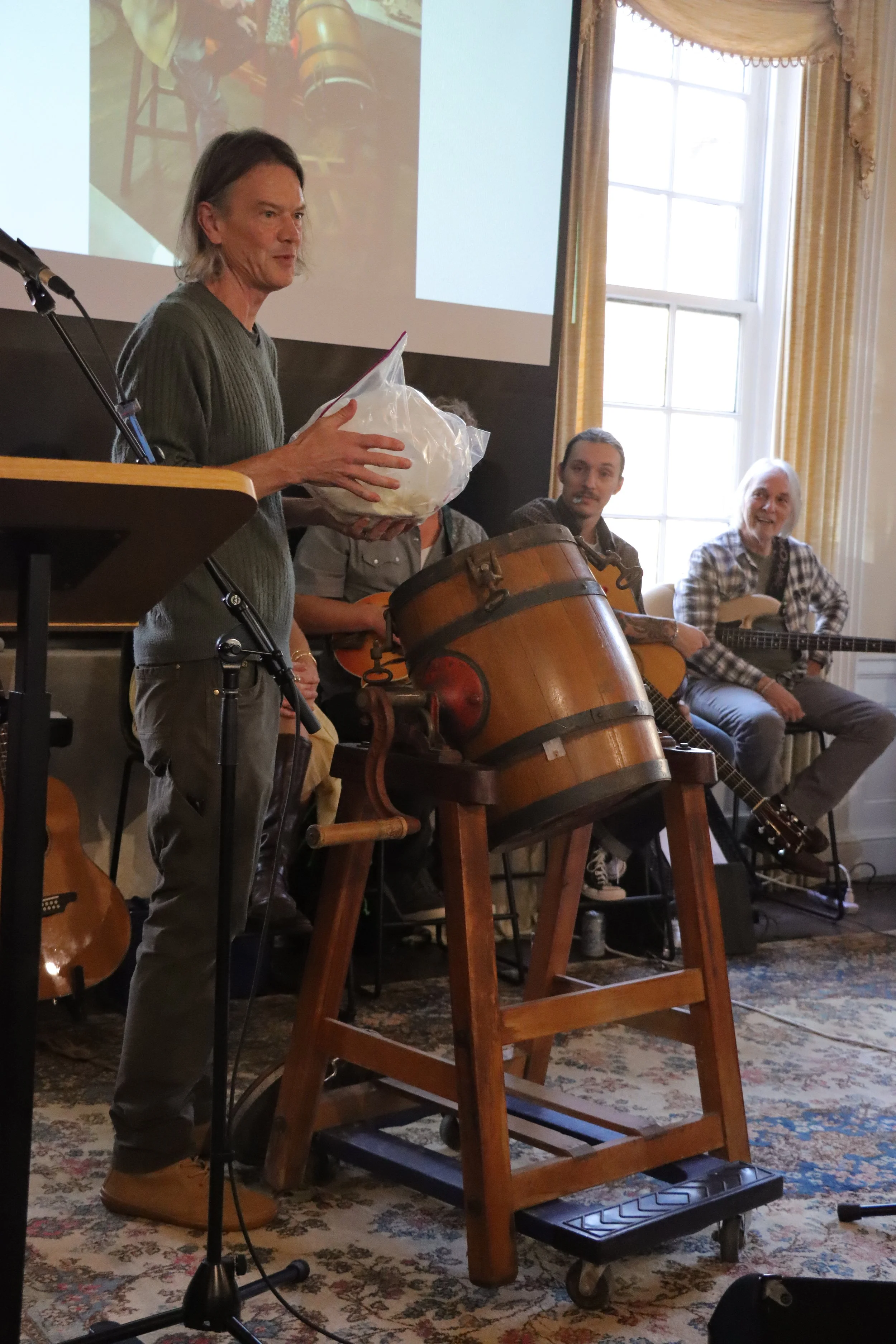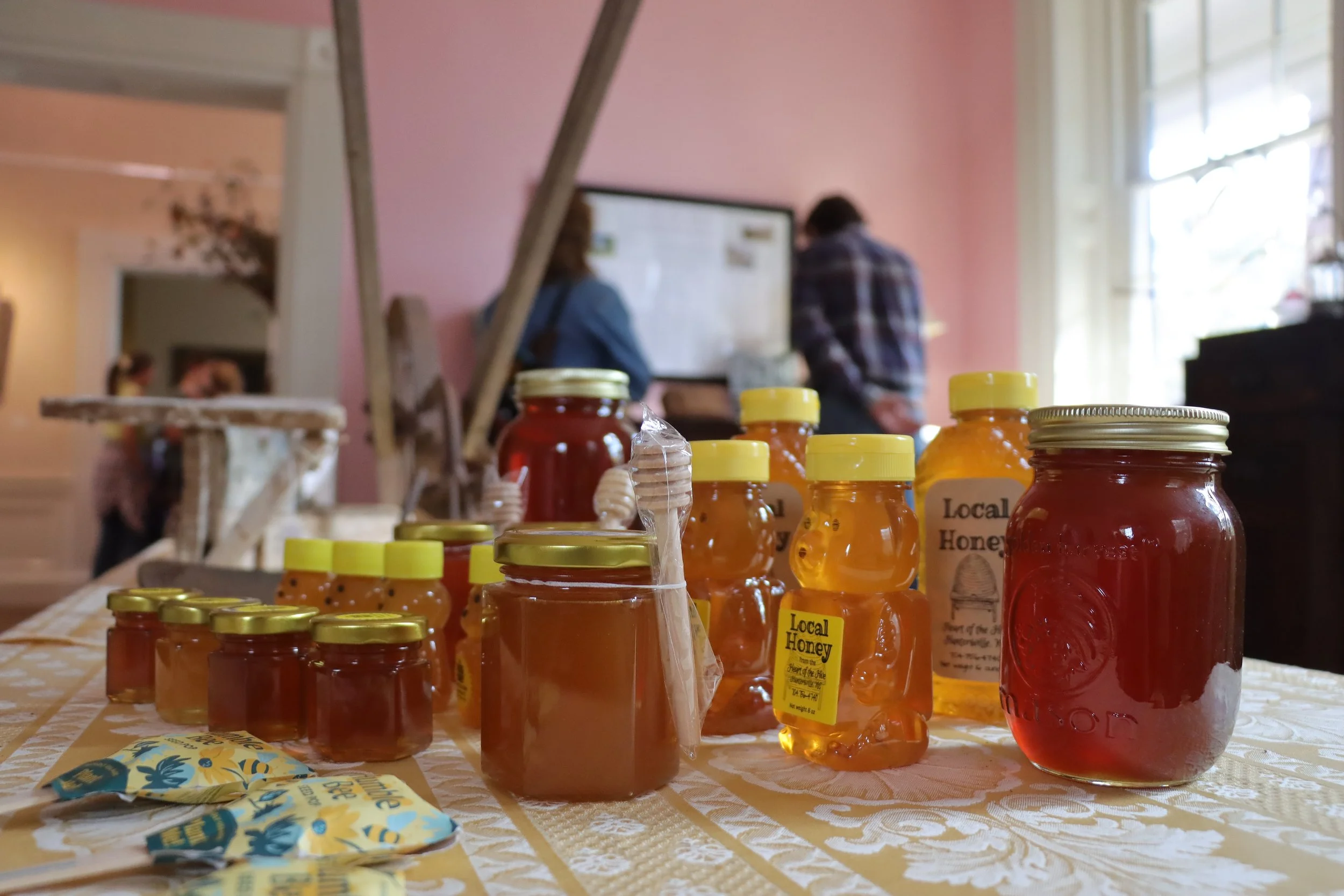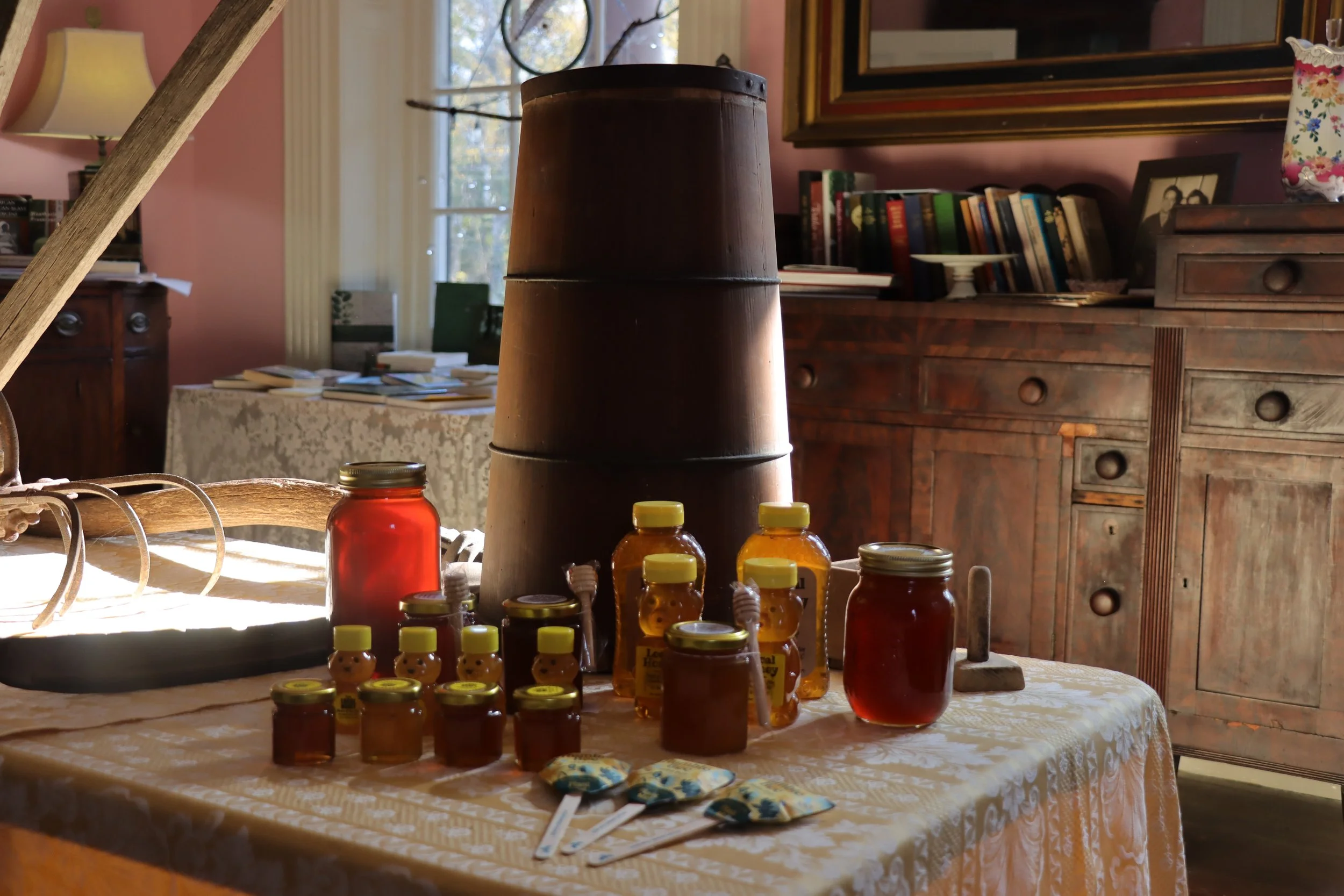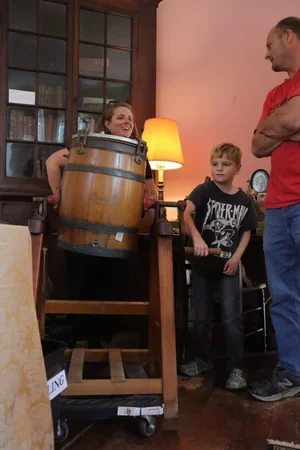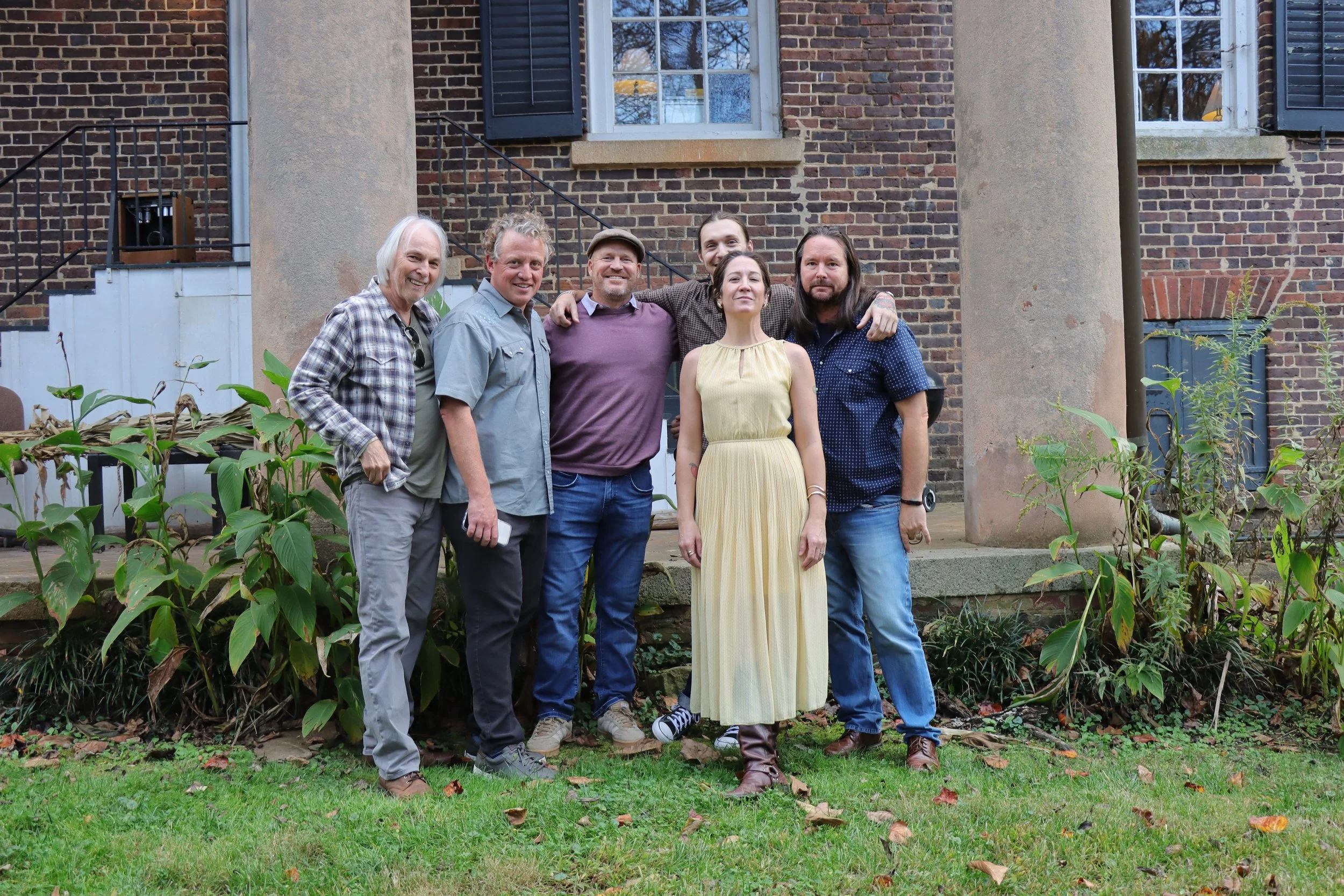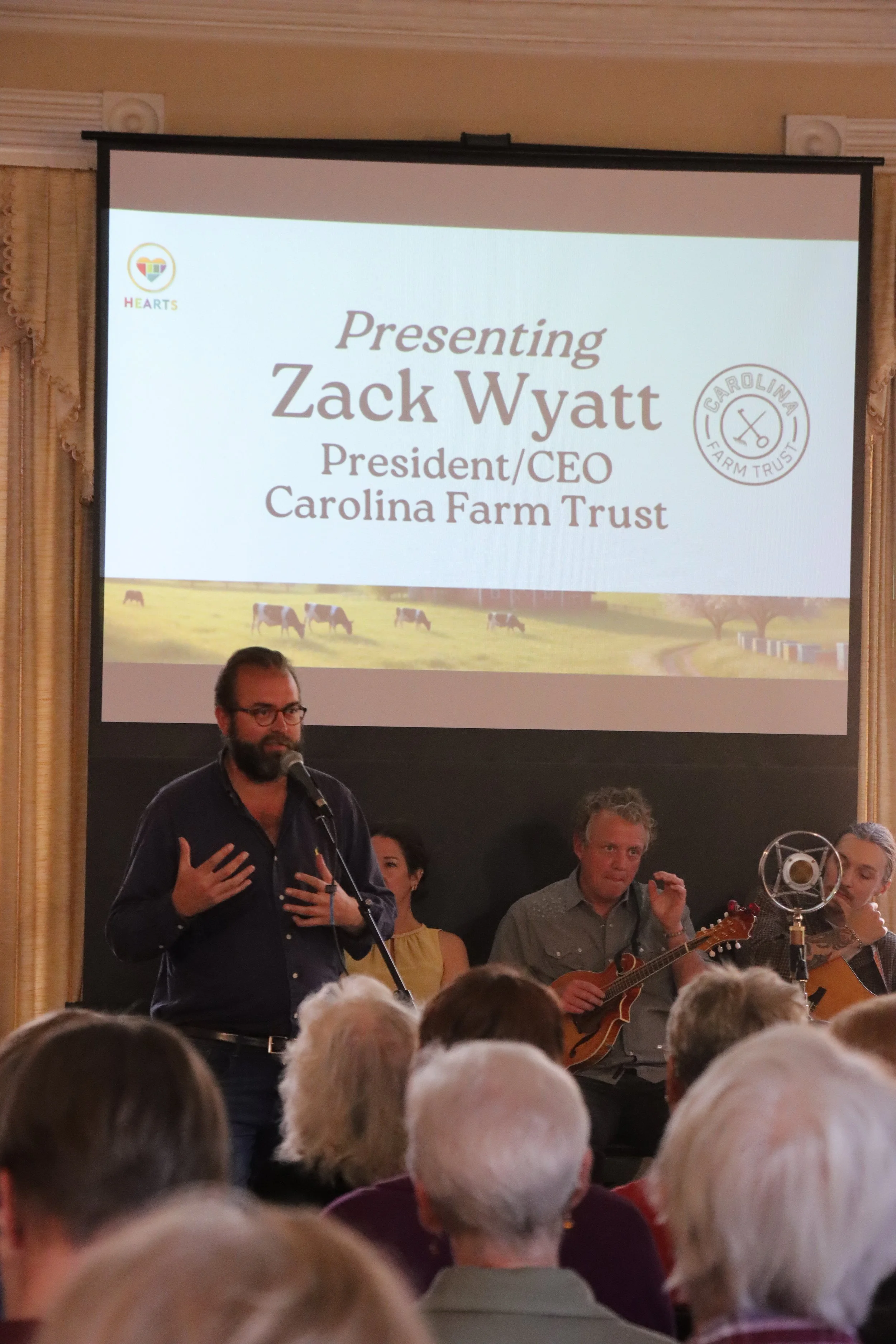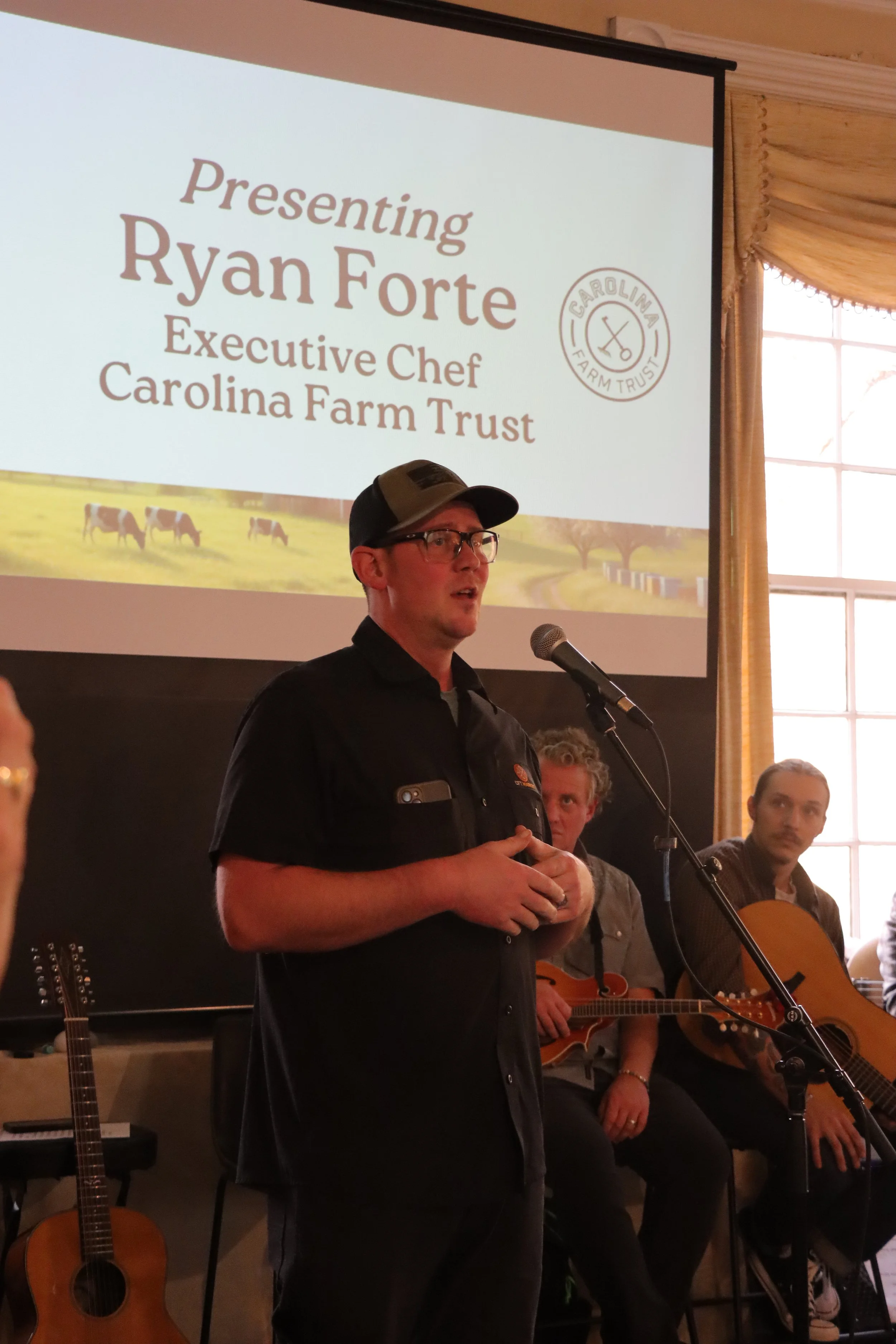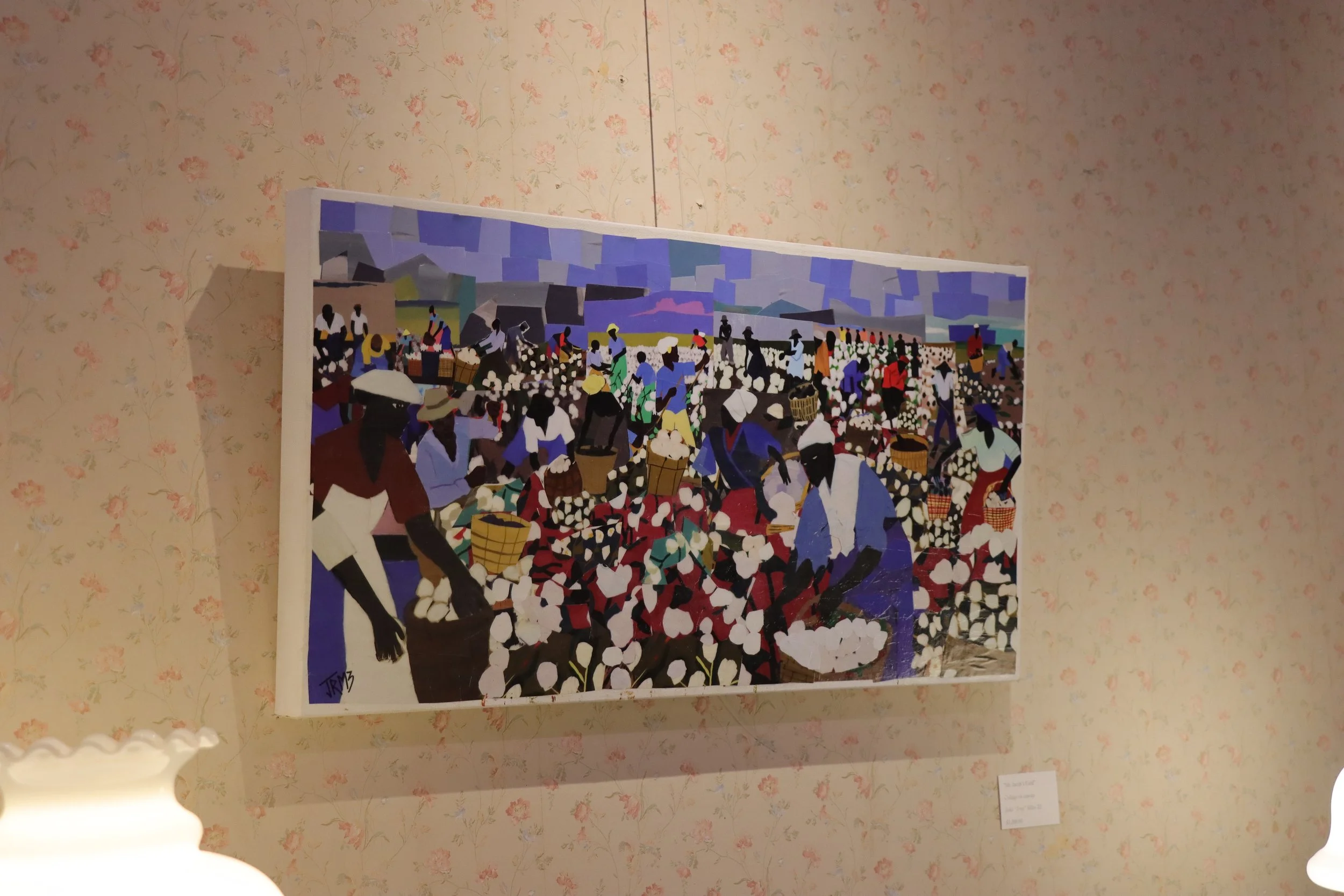Recap of HEARTS Harvest ‘25 - Milk & Honey: A Celebration of Land and Legacy
HEARTS Harvest ‘25 - Milk & Honey reflected the “E” is for ecology in HEARTS by bringing together local farmers, chefs, educators, musicians, and community leaders to explore the deep connections between heritage, land, sustainability, and the foodways of milk and honey through the ages.
Hosted at historic Cedar Grove, our event blended cultural storytelling, live music, and community dialogue. We even got a history lesson on some older tools used to churn and make butter, and guests had a chance to help churn butter in the antique churn recently donated by Gene and Linda Medlin.
HEARTS Harvest is our annual November HEARTS program exploring local farms, farmers, and farming history, helping us understand the past and what we as a community can do to support local farms and farmers today. This year’s program took a closer look at two facets of this history, beekeeping and dairying.
Honeybees go hand-in-hand with farming. The honeybee is, of course, NC’s state insect, and honeybees have been part of this area’s agricultural history for centuries. Honeybees and hives are first mentioned in NC court records around 1700, and beekeeping was a common practice on farms big and small by 1800. The value of bee products was so well recognized that colonists could pay their taxes in beeswax in mid-18th-century NC. NC was a leading producer of beeswax and honey during the 19th century. However, honeybees are responsible for something else even more valuable than honey, beeswax, and other products of the hive: pollination.
Dairying is an important part of our local farming history and tells us a lot about the greater history of farming in our area. At the beginning of the 20th century, the vast majority of Mecklenburg County was farmland. But much of this land was devoted not to growing food, but to the cash crop of cotton, which was supported by the tenant farming system.
However, at this time, an alternative to cotton was becoming available to local farmers: dairy farming. Before then, households and subsistence farmers typically kept a few cows for their own use, and they made their own dairy products like butter. However, a few enterprising and visionary local farmers, like Adam Brevard Davidson of Rural Hill, began importing and breeding cattle specifically for the production of milk and pursuing dairy farming as a commercial operation. The industry grew throughout the first half of the 20th century, and in 1920, Mecklenburg County could boast more dairy cattle than any other county in NC. Individual farmers who had previously marketed their own dairy products on a small scale began selling their raw milk to large dairy plants or dairy cooperatives.
The growing industry was increasingly regulated to promote safety, with regular inspections and a grading system for milk. Grade A, for example, contained the fewest bacteria after pasteurization. All of these developments shifted dairy production away from small producers to larger operations, using larger, more expensive equipment. In the second half of the 20th century, factors such as the labor-intensive nature of the work and growing urban development around Charlotte led dairy farmers to gradually exit the industry. By the 2000’s only a few dairy farms remained in the county, and now even those are gone. The last dairy farm in Mecklenburg County was sold in August 2025.
What’s a Milking Parlor?
Before the advent of dedicated milking parlors, dairy cows were typically hand-milked in the stanchion barns where they lived. This process involved confining cows in fixed stalls or stanchions and collecting the milk into pails, a slow and laborious task. Furthermore, this method often contributed to significant sanitation issues, as wooden barn floors harbored bacteria, and poor conditions led to quick spoilage. New regulations were introduced in the early 20th century to address these health concerns.
The introduction of the milking parlor revolutionized this process by moving cows to a separate, clean facility for milking, drastically improving sanitation. Parlors allowed for efficient, streamlined machine milking and easier cleaning of dedicated concrete floors, thereby solving the problems of slow, labor-intensive hand milking and widespread bacterial contamination.
Above are examples of milking parlors in the area. The first photo is of Edgewater Farm Park (formally known as the Stillwell-Hubbard farm), purchased by Mecklenburg County to become a new agricultural teaching farm. The second photo is a milk parlor, slated for demolition to make way for new development on the corner of Stumptown Road. The third example is a privately owned milking parlor in Davidson on land once part of the Bradford Farm. These humble structures were often hand-built with homemade concrete blocks and are important artifacts of dairy farming history. Unfortunately, they are rapidly disappearing from the landscape. Do you know of a milking parlor in the area? Please snap a photo so we can add it to our archives, and email it to info@heartscollaborative.org so we can preserve this important history in our community.
The afternoon featured live music by Heidi and the River Down, whose performance set a warm and soft tone for the day. Featuring Heidi Sidelinker, Billy Jones, Phil Skipper, Edan Aldridge, Mike Orlando, and Tim Helfrich.
Following their opening set, Zack Wyatt, founder and CEO of Carolina Farm Trust (CFT), took the stage to discuss rebuilding a regional food system that supports farmers, restores soil, and makes local food accessible to everyone.
Zack emphasized that the most significant challenge for farmers today isn’t growing food—it’s economic survival. CFT’s mission is to make farming financially sustainable by building infrastructure that keeps both food and profits within local communities. Their West Charlotte facility includes a commercial kitchen, bakery, and cold storage for wholesale operations, with plans for a nonprofit grocery store, teaching kitchen, and meat processing center.
Zack also clarified to our guests and members the difference between organic and regenerative agriculture: organic focuses on what isn’t used, while regenerative focuses on what’s rebuilt soil carbon, ecosystem health, and nutrient density in food. He urged the audience to consider how industrial agriculture has depleted soil and nutrition, making regenerative farming essential for future food security.
Executive Chef Ryan Forte from CFT followed with a zero-waste culinary demonstration, showing how every part of an animal can serve a purpose—bones for broth, fat for tallow, skin for chips, scraps for compost. The demo showcased a comprehensive approach to sustainability, where nothing is wasted and everything is recycled and returned to the earth.
Ryan then revealed the special tasting for the event guests: honey-lavender-thyme ice cream, made from locally sourced honey, herbs, and dairy, a flavorful tribute to the Milk and Honey theme.
Following another lively performance from Heidi and the Riverdown, the program transitioned into a panel discussion featuring Mike Luke, Heart of the Hive beekeeper; Chris Simeral, beekeeper and environmental educator from Pioneer Springs Community School; Zack Wyatt, CEO of the Carolina Farm Trust; Michael Conner, historian and genealogist; and Abigail Jennings, co-founder of HEARTS. They each explored the history of beekeeping, agriculture, and community sustainability. Moderated by Randolph Lewis, co-founder of HEARTS, the panel featured diverse voices bridging the past and present of local food traditions.
Mike Luke shared his journey from hobbyist to professional beekeeper, now managing about 60 hives across the region. He spoke about how bees cluster in winter months to stay warm, the seasonal honey production cycles, and how the innovation of the 1852 Langstroth hives allowed beekeepers to harvest honey without harming the rest of the bee colony. Mike also gave a brief demonstration on how a beehive box works to capture honey.
Chris Simeral brought a teaching perspective, sharing how he helps teach beekeeping at Pioneer Springs Community School, where students learn ecological responsibility through hands-on work with bee hives. Chris shared, “It is incredible to see the behavioral changes in students who can’t sit still in a classroom become calm and engaged when working with bees.”
He also noted that the honeybees were brought to America from Europe in the early 1600s, and discussed how they became central to agriculture across the Carolinas.
Michael Conner added personal depth through sharing stories of his memories of cows on the Connor Farm family’s ties to the land—picking fruit, working on his family's old farm when he was younger, and preserving agricultural traditions in Mecklenburg County. He reminded the audience that farming and food are inseparable from community identity and memory.
Zack Wyatt joined the conversation to connect these historical insights to modern food systems, emphasizing that regenerative farming and beekeeping are both essential to a thriving local ecosystem.
Together, the panel wove a story that linked heritage, ecology, and sustainability, illustrating how beekeeping serves as both a metaphor and a model for living in harmony with nature.
Guests left with a deeper appreciation for their community’s agricultural heritage and a renewed vision of what’s possible when music, history, and the land itself work in harmony.
“Into the Fields,” the new Center Hall exhibit at Cedar Grove, opened featuring local artists Doris Baharona, Michelle “Bunny” Gregory, John “Trey” Miles III, and Leigh B. Williams in partnership with Nine Eighteen Nine Studio Gallery.
Thank you to all our guests who joined us for HEARTS Milk & Honey’25. Thank you to Lake Norman Realty, Nine Eighteen Nine Studio Gallery, Carolina Farm Trust and all of our HEARTS Circle members for their continued support of HEARTS (history, ecology, art, reunion, trails, and store) and our mission to preserve and celebrate the importance of history and heritage within our region. If you’re not yet a HEARTS Circle member, now’s a perfect time to join our growing community. Together, we’ll continue to preserve and connect the stories, people, and places that have shaped this land.
Join us on December 6, 2025, 2:00 - 5:00 for our annual HEARTS Winter Wisdom at historic Cedar Grove in Huntersville, featuring storytelling, live holiday music, dance with the Moving Spirits, and meet the presenting artists from our “Into the Fields” exhibit, and so much more! Enjoy Cedar Grove decked out for the holidays and step back in time with seasonal stories of winter in the Piedmont.
Tickets are free, but donations are greatly appreciated. Click the button below, to reserve your seats now!

